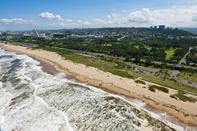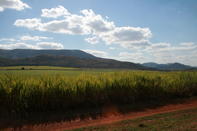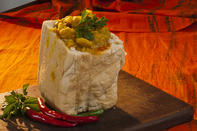A Gift from Shaka
The land of modern-day Durban was a gift from the Zulu King Shaka during the 1830's. Long before recorded history, the land was inhabited by the Khoi/San. On Christmas day, 1497, Vasco da Gama, the Portuguese explorer, passed by the mouth of Durban Bay and named it Rio de Natal.

He supposedly thought the bay was an outlet for many rivers. The area then looked very different to what we see today. A sand bar guarded the entrance to the bay, the vast mangrove swamps were home to many hippos, crocodiles and birds. The banks and hills were teeming with wildlife, such as elephants, rhino and lions. This bay was visited only by explorers and traders. It was a safe place to anchor, but for the time, remained undeveloped.
This all changed in 1823, when the first European settlement took root; a storm forced two British trading ships to anchor in the bay. The crew of the Salisbury and the Julia had time to explore and saw the great potential this safe anchorage had for Britain. The Captain of the Salisbury befriended King Shaka Zulu, who granted him land around the bay.
Over the preceding years, only a few people settled in the area - in 1835, the total number of settlers amounted to 15. These 15 proclaimed to have formed a town and called it Durban in honour of the Governor of the Cape, Sir Benjamin D’Urban.
Imported Indian Workers

After King Shaka’s death his successor, King Dingane, was not as benevolent to the Europeans as Shaka was, showing animosity and aggression towards them. In 1838 the Voortrekkers began to arrive from the Eastern Cape, laying claim to Natal. Enroute they had encountered warring Zulu’s that massacred many of the Voortrekkers. In 1842, the British sent troops to maintain order in the area, but came into conflict with the settling Voortrekkers.
In 1844, the British annexed Southern Natal to the Cape Colony, enabling thousands of settlers to make it their home. Farming sugar was the primary crop here during the 1800’s, which proved to be a very labour intensive activity. The Zulu’s were found to have a rebellious nature and were not easy to control. So, in 1860 the British imported thousands of indentured labourers from British India to work in the sugarcane fields. Along with the indentured workforce came free Indian businessmen who set up their businesses in the area.
Durban remained a backwater settlement until George Cato arrived and planned the development properly. He designed Durban with three main streets, each wide enough to be able to turn a wagon. By 1900, Durban had a sewerage system, hard roads and water. The railroads attracted people from the then Transvaal province to visit on their holidays, establishing it as the popular holiday destination it is to this day. Today, Durban is South Africa’s third largest city, its harbour of prime importance to South Africa’s economy and tourism industry.
Indian Cuisine in Durban

The British were so fed up with the Zulus thrashing them, they convinced many Indians that Natal was a much nicer section of the British Empire than anything India had to offer. Thankfully the Indians brought with them their mothers' recipes for breyani, chicken tikka masala and tandoori, lamb vindaloo, rogan josh, rotis, sambals and chilli bites to spice up the grey British fare.
A local Durban variant is the bunny chow — half a loaf of bread hollowed out and stuffed with the curry of your choice. In some fine-dining circles it has been refined as the gourmet bunny, but a steaming curry filling is non-negotiable. If, when in Durban, you want to sound like a local, you order 'a bunny, bru'. © David Bristow